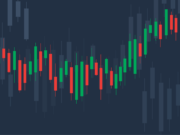Stocks declined last week, posting a second straight weekly loss following a hawkish Fed meeting and mixed inflation data. The Federal Reserve lifted its benchmark interest rate for the seventh and final time this year, approving a 50 basis point increase. Market participants were relieved to see a ramp down from the previous 75 basis point hikes but were discouraged by the Fed’s forward outlook, which calls for a higher benchmark target range for 2023 than initially outlined. The major indices retreated following Wednesday’s announcement, then were further dragged down on Thursday by retail sales figures for November that came in well below expectations. For the week, the Dow shed 1.7%, the S&P 500 fell 2.1%, and the Nasdaq contracted 2.7%.
With only two weeks left in 2022, recession fears continue to weigh heavily on markets. In the coming week, traders will be tuned in for the November update to the Personal Consumption Expenditures Price Index (PCE), the Fed’s preferred gauge for tracking inflation. Market participants are hoping for a signal that inflation continued to moderate last month and that the Fed will be able to tamp inflation without pushing the economy into a recession. The housing market will also be in focus, with the NAHB Housing Market Index due for release on Monday, followed by data on new and existing home sales for November.
One of the hardest hit sectors of the year, real estate, has been a bright spot in markets recently, thanks to fast-falling mortgage rates. According to bankrate.com, the national average for a 30-year fixed mortgage hit a high of 7.2% on November 11th and has since pulled back to around 6.5%. Homebuilders have benefited from the deep dive over the past few weeks and should continue to do so as long as mortgage rates continue to lower.
According to some Wall Street pros, we may have a “once-in-a-cycle opportunity” to cash in on the early-cycle outperformance phase of homebuilder stocks, begging the question – which home builders are best positioned in the lower-mortgage-rate environment?
Companies likely to be best positioned are the largest-scale players. Our first recommendation for the week ahead is the number one home builder in America since 2002, D. R. Horton Inc (DHI). Founded in 1978 in Fort Worth, Texas, D.R. Horton operates in 106 markets in 33 states across the United States and closed 83,518 homes in its homebuilding and single-family rental operations during its fiscal year ended September 30th, 2022.
The company is engaged in constructing and selling high-quality homes through its diverse brand portfolio, which includes Emerald Homes, Express Homes, and Freedom Homes, with sales generally ranging from $200,000 to over $1,000,000. It also provides mortgage financing, title services, and insurance agency services for its homebuyers through its mortgage, title, and insurance subsidiaries.
In its most recent quarter, D.R. Horton missed analyst estimates for earnings and revenue due to the cooling housing market. From June to September 2022, the company’s total homebuilding lot position decreased by 25,000 lots, but the company has been actively managing the lot and land pipeline and investments in lots, land, and development to meet needs during this transition in the housing market.
Impressive performance, industry-leading market share, a solid acquisition strategy, a well-stocked land supply, lots, and homes, along with affordable product offerings across multiple brands, are expected to drive growth. D.R. Horton’s earnings are expected to grow 1.7% in fiscal 2023. The stock has gained 24.9% over the past three months, outperforming the industry’s 19% rise. DHI stock has a solid Buy rating from the pros offering recommendations. A median price target of $95 represents an increase of 8% from Friday’s closing price.
The airline industry has seen a remarkable recovery in 2022 thanks to increasing travel demand and consumers’ willingness to pay higher fares. With airline stocks currently trading at very low multiples, many long-term-minded investors are eyeing the group, wondering which of these beaten-down tickers is the most attractive value.
Delta Airlines (DAL), the second airline company to have joined the coveted S&P 500 Index, commands more than a 17% share of the domestic aviation market. As you would expect, most of the Atlanta-GA-based carrier’s revenues are realized from its airline segment. What might surprise you is that 10% of the $29.9-billion amount generated in 2021 came from the company’s refinery segment, which operates for the benefit of the airline division by providing it with jet fuel from its own production.
Fuel savings are crucial to a functioning aviation industry in this next chapter. From increasing costs to environmental impact, airlines have had plenty of reasons to save every bit of jet fuel they can. Delta recently revealed details of how its fleet renewal program has helped to save tens of millions of gallons of fuel.
Last week, the airline heavyweight raised its Q4 and full-year 2022 guidance and forecast an upbeat 2023, driven by robust demand. The company now expects the fourth-quarter 2022 operating margin to be 11%. Management sees adjusted earnings per share in the $1.35-$1.40 range (the earlier outlook was $1-$1.25). For the full-year 2023, DAL expects 15-20% year-over-year revenue growth. Earnings per share and operating margin for 2023 are expected in the $5-$6 band and 10-12% range, respectively.
Delta has been more conservative than some competitors in bringing back capacity, but the carrier aims to have its network restored to 2019 levels next summer. In the meantime, several competitors have had to cut routes and scale back on expansion plans as supply chain, and labor constraints have delayed the production of new aircraft. Airlines continue to struggle with labor shortages, but for Delta, bookings remain strong into early 2023.
Delta shares are currently very cheaply priced at less than eight times earnings. The stock garners an 85% Buy rating on Wall Street. A median consensus price target of $45 represents a 36% increase from the last price.
As long as marijuana remains illegal at the federal level, access to credit markets for pot companies will be spotty at best. Marijauana-focused real estate investment trust Innovative Industrial Properties (IIPR) buys medical marijuana cultivation and processing facilities in legalized states with cash and leases these properties back to the seller. It’s a win-win agreement that provides money to cannabis companies while netting IIP long-term tenants.
IIPR provides investors ground floor access to exponential growth potential along with the reliability of a REIT. As of early November, Innovative Industrial Properties owned 111 properties covering 8.7 million square feet of space in 19 states. Over the past five years, IIPR’s quarterly dividend payout has grown by 1,100%. The REIT currently boasts a 7.74% yield.
You might also like:
- The Crypto Melt-Up has Begun
- “A.I. is a Tidal Wave” – Here’s What to Buy
- Beware Executive Order 14067
- #1 AI Stock for 2024 and Beyond
- Bank plague 2024
- Gates, Bezos, and Buffett invest in AI Keystone
- Congress Just Fast-tracked New A.I. Energy Breakthrough
- Elon Musk: THIS will be bigger than Tesla
- EV charging stations that pay you up to $93/day!
- Legendary Wall Street Stock-Picker Names #1 A.I. Stock of 2024, Live On-Camera
























